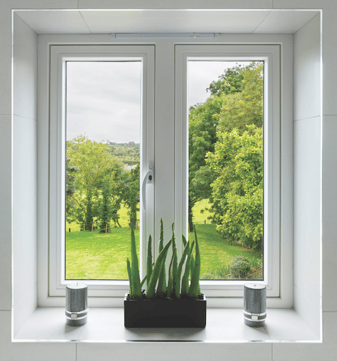 Florida summers are inevitably hot and humid. Many residents enjoy the warmer weather outside but don’t enjoy the heat in their home.
Florida summers are inevitably hot and humid. Many residents enjoy the warmer weather outside but don’t enjoy the heat in their home.
That’s why homeowners find energy efficient windows most beneficial. According to EnergyStar.gov, “Heat gain and heat loss through windows are responsible for 25%–30% of residential heating and cooling energy use.”
There are several parts of an energy efficient window that you’ll need to consider, including:
- Window type
- Design
- Energy use
- Labeling
- Warranties
- Proper installation
Choosing ENERGY STAR labeled windows is an indicator that they are an energy efficient window. Click here to learn how to understand an energy efficient window label according to the National Fenestration Rating Council (NFRC), review ratings and find the right energy efficiency that meets your lifestyle needs.
What is an Energy Efficient Window?
Energy efficient windows are designed to reduce your energy bills and maximize your comfort by preventing hot and cold air from escaping and entering your home.
According to ENERGYSTAR.gov,
“Anatomy of an energy-efficient window: Quality Frame Materials: A variety of durable, low-maintenance framing materials reduce heat transfer and help insulate better. Some ENERGY STAR-qualified windows include three or more panes for even greater energy-efficiency, increased impact resistance, and sound insulation.”
Benefits of an Energy Efficient Window
There are several benefits of energy efficient windows including tighter insulation resulting in reduced energy bills and a quieter home.
To learn more about how energy efficient windows can benefit you and your home, click on the resources below:
- 3 Summer saving features of energy efficient windows
- The homeowner’s guide to energy efficient windows
Below are several window selection tips provided by EnergyStar.gov, including:
- “Look for the ENERGY STAR and NFRC labels.
- In colder climates, consider selecting gas-filled windows with low-e coatings to reduce heat loss. In warmer climates, select windows with coatings to reduce heat gain.
- Choose a low U-factor for better thermal resistance in colder climates; the U-factor is the rate at which a window conducts non-solar heat flow.
- Look for a low solar heat gain coefficient (SHGC). SHGC is a measure of solar radiation admitted through a window. Low SHGCs reduce heat gain in warm climates.
- Select windows with both low U-factors and low SHGCs to maximize energy savings in temperate climates with both cold and hot seasons.
- Look for whole-unit U-factors and SHGCs, rather than center-of-glass U-factors and SHGCs. Whole-unit numbers more accurately reflect the energy performance of the entire product.”
To learn more about how the EPA regulates energy efficient windows, click the button below!


